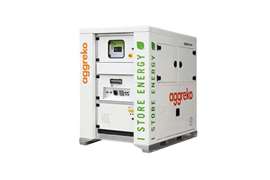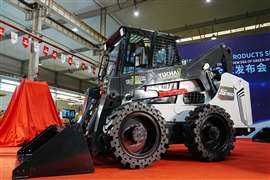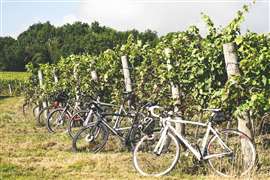Interview: Ken McDougall
03 February 2020
Skyjack’s new president Ken McDougall speaks to Euan Youdale about his vision for the manufacturer during a time of major change for the access industry.
Ken McDougall is the new president of Skyjack, having taken over from Brad Boehler, who stepped down from the position in September last year. However, McDougall is no newcomer to the access industry or indeed Skyjack and has four years under his belt at the manufacturer, including as its president, some 10 years ago.
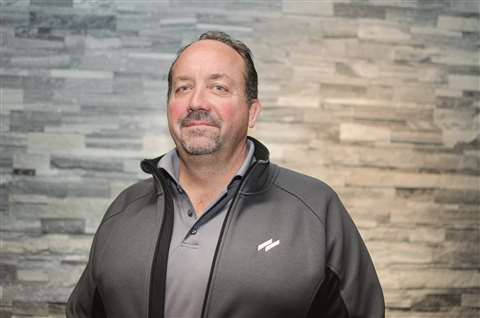
He’s also a longstanding member of Skyjack’s parent company Linamar and has been treading the boards there since 1987, when he joined the group as a tool designer and manufacturing engineer, just months after graduating from college. The following years saw him in a range of roles on the automotive side of the business, including as director of Asia Pacific development.
McDougall joined Skyjack, for the first time early 2000’s as vice president of operations, in a succession role that would see him take over from then president Lloyd Spalding, who was approaching retirement. The stint lasted from 2004-2009, before he moved back to his automotive routes. Nevertheless, in that short period he had time to oversee the company’s expansion from a scissor lift only manufacturer, into booms and the acquisition of two telehandler lines from Carelift and Volvo.
“I didn’t want to leave, it wasn’t a planned thing and it wasn’t my choice, it was by need of the corporation, so I went where I was needed most but I always wanted to come back,” says McDougall.
The year was 2009, shortly after the start of the financial crises that hit markets worldwide. “Everything was way down, we [Skyjack] were less than half of what we had been in 2007. So, with the markets being as soft as they were it wasn’t as much of a going concern.”
At the same time the automotive side of the business was picking up steam and hit some issues that McDougall had the skill set to resolve. “A decision was made that I could add value quicker by going back and taking over some of those operations.”
The ensuing years saw Brad Boehler establish himself as president of Skyjack. He stepped down from the position in September as McDougall was brought back onto the scene. Boehler had also just taken on the position of president of the International Powered Access Federation (IPAF); a role he was also required to step down from, as those on the IPAF board members must be employed by a full member Federation, as Skyjack is. To the wider industry, his effective departure from the access industry seemed very sudden.
“I think the world of Brad,” says McDougall, “Brad played an integral role in setting our team up for the success and growth we’ve experienced over the past few years. He was here when I was here last and I worked with him; bringing him up through the organisation into leading engineering, which is where he was when I left, and I was very supportive of him taking over as president of Skyjack.
“Brad was looking to see what else he could do personally, to expand and grow, so I think the timing worked out. When the world heard about it, it seemed like it happened overnight but there were some conversation going around before that, so it wasn’t as much of a light switch as it may have seemed.”
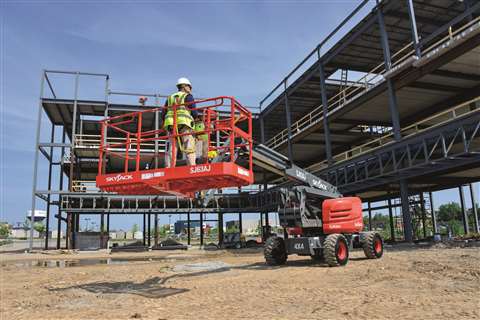
Group strategies
Skyjack has been part of Linamar since 2001. “It was a local based company, just around the corner from our head office. Our CEO knew the owner and it was in a bit of financial trouble at the time; we saw some synergies and diversification. Really, we are just trying to round the company not to be 100% reliant on the global automotive market. Skyjack was a good diversification play and a great company.”
The group has continued to diversify, latterly into agricultural markets, through the acquisition of MacDon, and it recently announced it would make medical products. Skyjack is also looking to spread its wings and grow its global footprint. One of the primary reasons for McDougall’s return to Skyjack was to lead that expansion with the vision of “producing in the market for the market…and probably bringing back some more automotive mentality to make it a bit more production-based.”
McDougall has experience in both these areas having played an integral role in setting up Linamar’s international bases, including five facilities in China, as well as overseeing its start-up plants in Mexico and a couple of its acquisitions. “I’ve spent time living and breathing Linamar’s Mexican operations and running the facilities down there, in addition to spending quite a bit of time with our European operations.”
Sales in the US are predominantly responsible for Skyjack’s revenue and McDougall would like to see annual revenue dispersed far more equally between North America, Europe and Asia. Currently, some 20%-25% of revenue comes from Europe, he says, with the plan being to improve that situation with increased products, parts and training support to bring the region up to represent a third of the business. In fact, Skyjack has already started manufacturing equipment in Europe, as recently as last year using one of Linamar’s facilities in Orosháza, Hungary that has been expanded for that purpose and now produces two models, the SJ45 AJ and SJ51 AJ.
“Investment has been put into this area, which Brad and the team led and I will continue and see how quickly we can get that up and rolling. It will also give us a natural hedge against any currency fluctuations.” There are already plans to up the production levels, with one model being added at a time as the facility develops.
Asia ambition
Skyjack has an equally ambitious goal in Asia and while the company opened an office in China in 2013 and another in Korea last year, there is a great deal still to be done.
“We have a little bit of catch up to do for sure,” says McDougall. “It is a market that you cannot ignore, and we haven’t ignored it, but we are definitely not in there to the capacity we’d like to be, or at the same size and breadth as the emerging OEMs coming out of China.
“The companies that already have a distribution model and network have a leg up on somebody coming in fresh, so we have to take a look at the entire market, the distribution network and pick the right path.
McDougall adds, “We have been importing equipment into the area, but the cost of imports and duty and everything else associated with that is a little prohibitive from getting us the big foothold that we would like to have.”
Again, his aim is towards local production, although this time probably not directly aligned to existing Linamar plants. “We would have to take a look at economy of scale and what it takes from a timing perspective, so really we are exploring all options but with a very clear path, and a couple of things that we will be initiating this year.”
Looking across the OEM’s currently operating in China, they also include the large general construction manufacturers based in the country that have started up their own access divisions in very recent years. “They are serious players with a big footprint and distribution. It won’t be easy but it is something that we are committed to,” says McDougall, “The best way to do that is to manufacture in the market for the market.”
Production management
In the same vein, Chinese manufacturers have goals in Europe and North America and are facing similar challenges to those found by Skyjack in Asia. Nevertheless, they are already making their presence felt, which brings McDougall on to another one of his major focus points as the company’s new president. “We need to be mindful of how lean we are, so that we can continue to compete and need to make sure we are doing that and maintain the high level of quality and safety.”
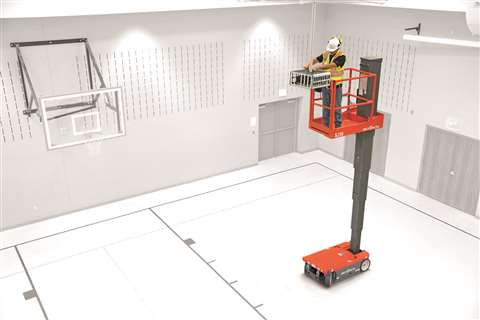
“Any time there is more competition in the market, in general it is healthy for the market. I would not go so far as to say I am happy to see them coming but it does keep us no our toes, when it comes to our processes and getting our costs in order because it could change the landscape of the market, and is changing the landscape of the market.
“Ten years ago, the market in general probably scoffed at some of the equipment coming out of China, but you can’t do that today - they have come along way and will continue to do so.”
Nevertheless, the number of new manufacturers springing up in China is remarkable. It leads one to wonder if all these companies can survive long term, despite the opportunities?
“As with the rental market, you have a growing number of companies and then there is a consolidation,” McDougall answers, “So, I think there is a natural culling effect and I don’t expect the numbers of OEMs to exponentially grow from here. At some point it will level off and again there will be a key few, and there may be some partnerships and affiliations that are formed.”
All this comes at a time when the world’s two biggest markets, North America and Europe, are starting to soften. Despite that slowdown, McDougall believes Skyjack is looking at moderate growth in the months ahead, partly thanks to global expansion and he believes 2020 will be a ‘cautious’ year, rather than challenging. While the Skyjack is part of the Industrial division of Linamar, which does not split out its figures. McDougall confirms that it is hovering around the $1 billion annual revenue mark.
“I think, our growth depends on penetration and market share. Overall, the market is not projected to grow, although I think we have opportunities, being new into some of the telehandler and boom products, where we are taking take market share, and I don’t see why that shouldn’t continue.”
Economic challenges
One area of concern in the US is the amount of equipment that has entered the market over recent years. “There is a glut in the market. There has been a bit of oversupply from a bunch of the OEMs that I think the market will have to absorb.”
In addition, the market is still adapting to the latest round of consolidation, says McDougall, a situation that is also apparent in Europe.
Overall McDougall describes the US market as bewildering. “The economic conditions continue to be very buoyant but there is a lot of other noise in the system. It seems the country has not talked itself into a recession, but with the upcoming elections and theatrics that go with that we will see what happens.”
Similarly, the political landscape in Europe has been less than clear. Following three years of uncertainty it seems now that the UK will leave the European Union on 31 January this year, while the shape of the withdrawal agreement is yet to be agreed with months of negotiations set to follow.
And the slowdown in Europe seems to have been more pronounced than in North America. “Even on the automotive side, it seems to have been hit a little harder over the last year than we have seen in North America. And I would say there has been talk of softening there for longer. So, some of the economic conditions are not as buoyant as they have been in the US. I think that getting Brexit out of the way and some of those unknows will help with the situation.”
The consolidation factor has also been playing its part in both the US and Europe. “As you see some of the bigger rental companies getting bigger, [following acquisition], there is always going to be a need for them to rationalise the overall fleet size. So, I think one plus one doesn’t necessarily make two, when it comes to two rental companies merging, at least initially. There’s a little of that happening, as well as the political things that are happening.”
These established access markets are certainly not remaining static. Much of Skyjack’s energy has gone into laying the groundwork for the new US ANSI A92 standards, which have just had their implementation date delayed again, this time to 1 March.
When they do come in, as the almost identical Canadian CSA B354 version already did in 2018, the standards will closely align to global ISO and share many of the requirements found in other global markets, like Europe’s EN280 that requires, for example, load and tilt sensing on equipment.
“We took the opportunity as we went through the updates on the machines to work with our customers to see what other things we could incorporate,” says McDougall, “We have updated our pothole protection system, emergency lowering, we’ve increased some rigidity and we’ve added a new control box.”
As with any major engineering overhaul, there are costs involved and Skyjack has sought to mitigate these as much as possible. “There was an overall increase in the cost of machines, which does get passed onto to the customers; some of it was absorbed by ourselves.
“I think there has been a general understanding that it is something that needed to happen and there is a cost to it. It’s something we had conversations about and I think there is a very clear understanding.”
Has it been difficult for rental companies and their operators to adapt to these new regulations? “I think there is going to be a learning curve as the new ANSI machines come out but it’s good for the industry. These things were added in Europe for a reason, to protect the operation of the machines from misuse.”
And, with ANSI more aligned to international standards, equipment is now more common than ever, says McDougall. “From a production standpoint, they are now less different and from a training standpoint, I think it’s a little more seamless now.”
He hopes in the future there will be even more alignment, which, in turn, helps the economy of scale that comes with producing larger number of identical machines.
Standard training
On the subject of training, McDougall is an advocate of IPAF and the PAL Card and has already been in discussion with IPAF’s new president Peter Douglas. “Skyjack has always been very aligned with IPAF. We are working in conjunction with them for the overall good of the industry - how do we continue to work together and get North America to take on standardised training? It’s something that I pushed very hard for when I was here last time. But it hasn’t taken hold in North America as it has in Europe. So, it may mean that we take step back with IPAF and others and figure out a new way forward that improves the industry from a safety and training standpoint.
“We will continue to be a very strong member of IPAF and continue to support the initiatives.”
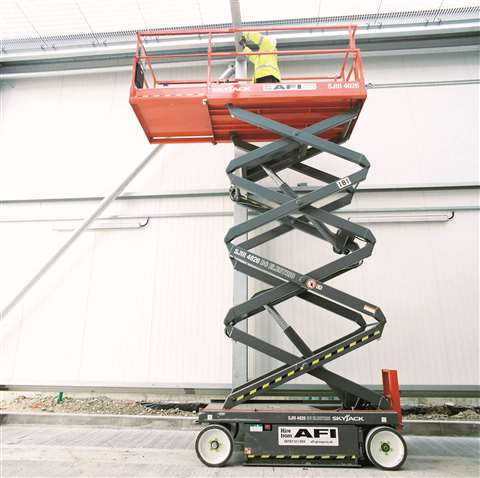
As far as equipment is concerned, Skyjack has always prided itself in its no nonsense approach and uses the ‘simple and reliable’ slogan as its selling point. There are no plans to change that approach in light of arguably more complex industry, resulting from the introduction of telematics and the promise of electric and hybrid equipment in the future. “We like to keep things as customer and user friendly as we can. The world’s ever changing and It’s fine to come up with a bunch of things but it has to add value to our customers.
However, Skyjack is not turning its back on technology, “With the advent of telematics and our Elevate platform, it gives us the greater ability to work with customers. And with the everchanging market in electronics, I think the speed of some of those changes is quicker than metal, so we will continue to watch and come up with some innovative solutions.
“We don’t want to be like Big Brother – but when we can work with our customers and monitor how the equipment is being used we get a better idea on how to improve - what kind of technologies would be beneficial - and we have a lot of really cool things that the team will be working with them on.”
Since the advent of telematics in the industry there has been much talk about data sharing and the practicalities of it. McDougall believes data sharing will become a vital element of the industry. “I think we can share the data, and we are. We have many customers that we are directly interfacing with and sharing the data back and forth. Because it only helps all of us if we work together on it. I think that’s a partnership that continues to develop and hopefully we are going to be showing things that they can take advantage of through our systems that will make it even more important that we share things.
“Once you have data it’s endless what you can use it for. It goes well beyond asset recovery and asset monitoring. All kinds of things and that can be shared with the OEM and in partnership with the customer we can increase the overall return for both parties.”
When it comes to the emergence of hybrid and electric-powered equipment, Skyjack has not made the jump into rough terrain equipment yet, in terms of product launches. However, McDougall says the company’s fingers are on the pulse and it is a case of leaping at the right time.
“We are being cautious in our approach, maybe more cautious than some of our competitors but I think there is a good spot for that technology.
“We have some activities in this area that have been ongoing for a while; it’s just a case of where to put them and when and get it to a point where it is going to be cost effective.”
Even though there will be some jobsites that insist on this technology, McDougall adds, “I think it would be remiss to say there are massive premiums to be paid to us or that rental companies will get from their customers by using hybrid/electric.
“I think it will spread. It is something that will spread. But there are other alternative fuel sources - there are all sorts of other things that you could do. One of the good parts of being owned by and affiliated to an auto manufacturing company, is that we are already doing some really cool things on that side as well.”
Product focus
New products that can be confirmed are RT scissors and vertical masts. Last year Skyjack launched a range of full-size rough terrain scissor lifts which included the SJ9233 RT, SJ9243 RT, and SJ9253 RT. This year it’s adding one final product to that family, and Skyjack’s highest reaching scissor lift to date, the SJ9263 RT. These will be followed by the new vertical mast product, as well as new features within the ELEVATE digital suite.
Telehandlers are part of Skyjack’s expansion plan too. The product type is a relatively small part of overall revenue, but growing. The company refreshed its TH line a few years ago and is introducing its first telehandler to Europe, the compact SJ519 TH. “We are doing an exploratory look at it now in Europe, with the current North America design, find out market acceptance.
“It’s a completive landscape in Europe, with some fairly large companies that will make it a little bit tougher. JCB and others have quite a network and good equipment so I think the barrier to enter the market may be a little steeper than it was in North America.”
With all these expansion plans, does Skyjack aim to lift itself from third largest access equipment in the world, by revenue, to the number one spot. “I am not obsessed with being the biggest, we just want to be the best,” McDougall explains, “So, we will continue to work on our products and brand and hopefully with that we drive the demand which moves us up the food change.
“I don’t have a top line rule to beat the other two guys, I just want to be considered to have the best equipment and have our customers satisfied, our employees happy and satisfy our shareholders. If we could move up from three to one, that would be awesome but it’s not something that I have on my bucket list in terms of revenue.”
One thing is for sure, McDougall adds, Skyjack will remain within the ranks of Linamar and there are definitely no plans for it to be acquired.



